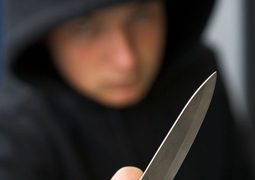
The Department of Basic Education (DBE) today said that the trend of school violence has been decreasing over the last few years. In 2013 this figure was reported at 14.9% and in 2011 Statistics South Africa (Stats SA) reported it has gone down to 11.1%, a joint meeting of the Portfolio Committee on Basic Education, Portfolio Committee on Police and the Portfolio Committee on Social Development was told today.
Committee Chairperson, Ms Mbinqo-Gigaba, said it is encouraging that the figures are on the decline. “We will be monitoring this closely and also work with all stakeholders to ensure that it goes down further in an attempt to ultimately eradicate it.”
The meeting heard that although it is banned, corporal punishment remains one of the most common forms of violence in our schools. The DBE told the committees that schools that are located in communities with high crime and violence have higher rates of school violence and the classroom is the place where most violence occurs. The statistics for bullying are high across schools, although slightly lower in quintile 4 and 5 schools. It also emerged that most violence is perpetrated by learners at the school and not by outsiders.
In terms of sexual violence, the committees were told, it is common and perpetrated by both learners and teachers. According to the Optimus Study: Sexual Victimisation of Children in South Africa, in May 2016, found that one in three (35.4%) young people had experienced some form of sexual abuse before the age of 17. Boys experience sexual abuse at a slightly higher rate (36.8%) than girls (33.9%), although boys are much less likely to report abuse to the police.
Committee member, Ms Marie Sukers, said a collaborated social media campaign is required to raise awareness, educate and inspire young people.
The DBE said specific programming for boys is required “as you don’t grow up to be an abuser or a rapist”, without neglecting the efforts to address the continued vulnerability of girls The study called for the formulation of a much-needed child protection protocol for the management of sexual offences for both state and NGOs (non-governmental organisations).
Some of the interventions made by the DBE are specific interventions for most at risk schools, improving the built environment. It further stated that learner safety needed to be taken into account when planning school infrastructure like fences, metal detectors, burglar proofing, alarms, and bullet proofing.
Committee member, Ms Chantal King, said challenges with fencing allows criminals access to schools, and learners the opportunity to bring weapons onto the school ground.
The Minister of Basic Education, Ms Angie Motshekga, agreed that infrastructure is a challenge but reminded MPs (Members of parliament) that in some instances it is a question of re-addressing the legacy of the past.
The DBE further suggested the closure of taverns and liquor outlets in close proximity to schools, search and seizures in partnership with the SAPS and the provision of security guards to schools at risk – the high labour cost is justified when compared to losses linked to vandalism.
Ms Mbinqo-Gigaba said a collaborated approach is required to address violence in schools.
By Rajaa Azzakani
10 September 2019

